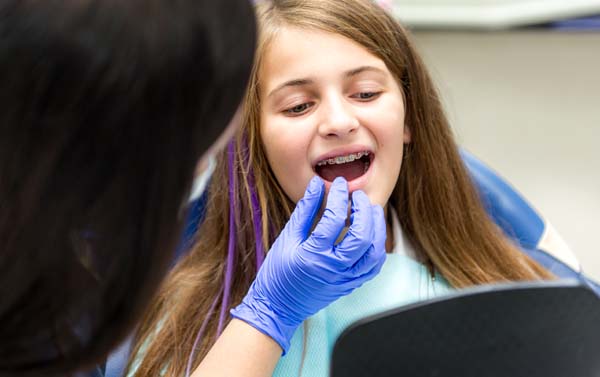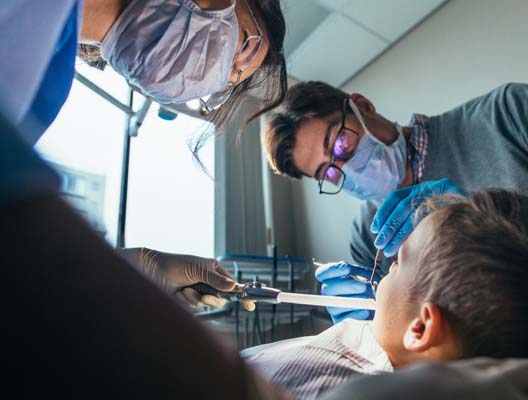How to Choose Between Braces and Clear Aligners

Looking for information on braces? Perhaps the most prevalent question orthodontists and patients have to address when it comes to teeth straightening is whether it is better to go with braces or clear aligners for treatment. Although each one is an effective option, there are times when one may be preferable to the other.
Braces vs. clear aligners
Braces and clear aligners are the two most popular forms of teeth straightening systems. However, the process for each is very different, and it can be helpful to be mindful of these differences when deciding which option is better for you. The following is a complete overview of how to choose between braces and clear aligners.
What are braces?
Braces are a form of orthodontic treatment that involves the use of brackets, which are placed on the surface of teeth with a dental bonding glue, and wires, which pull teeth into a more aligned position. Unlike clear aligners, braces are not able to be removed by the patient, and they may require diet changes and extra care to ensure teeth remain healthy. There are several different types of braces, including traditional metal braces, ceramic braces that are less visible to others and lingual braces which are placed on the back of teeth.
What are clear aligners?
Clear aligners have become more popular in the past decade, and the most appealing feature of this option is that they are essentially invisible to others. Many who go through teeth straightening — especially many adults — are concerned about how they are going to look wearing braces at an older age and therefore elect to go with clear aligners.
The clear aligners process involves wearing a customized plastic tray, which is similar to a mouthguard, for 20 to 22 hours each day. As the teeth are pulled into a better-aligned position, new aligners are made and the process continues until treatment is complete.
Which is better?
There is no clear cut answer as to whether braces or clear aligners are better, and each patient and their orthodontist should consider their own preference and needs in order to determine the most appropriate solution. It is important to keep in mind that not everyone is eligible for clear aligner treatment, and some more serious cases of crooked or crowded teeth may require braces instead. However, those who are eligible for both should weigh the personal pros and cons of each and discuss with their orthodontist before deciding.
Talk to an orthodontist today
Both braces and clear aligners are incredibly effective, and there are many benefits to having straighter teeth, including an improved smile, better oral health and higher self-esteem. If you are considering braces or clear aligners treatment, consult with us today and schedule a time to come in for your first visit, during which we can conduct an oral examination and discuss each option with you. Once we agree to treatment, we can guide you through each step of the process and ensure you are happy with your smile and able to go through life with more confidence.
Request an appointment here: https://www.myhawthorneorthodontist.com or call Hawthorne Orthodontics at (310) 921-8333 for an appointment in our Lawndale office.
Check out what others are saying about our services on Yelp: Braces in Lawndale, CA.
Recent Posts
A pediatric dentist works with your child to treat their condition and teach them the importance of oral health from a young age. Misalignment and malocclusions are quite common in children and adolescents as their teeth develop. There are several reasons a child might require braces. Treating these conditions early on can help guide their…
Even though braces are common among teenagers, getting them is a new orthodontic experience for every patient. Teens and their parents tend to have many questions about braces and other orthodontic treatments for teens, when to get braces, and what having braces will be like. Here are some of the most common questions orthodontists hear…
Generally, a retainer is the last vital stage of orthodontic treatment. The appliance, made from metal and plastic, is personalized for each patient to fit perfectly into the wearer’s mouth. After braces or other orthodontic devices have corrected the alignment of the teeth, the retainer functions to stop them from shifting back to their previous…
Invisalign® is a common type of invisible braces that is developed by Align Technology. Many dentists around the world have used this treatment to fix dental problems. Invisalign is basically a removable orthodontic appliance. It is often offered as an alternative to traditional solutions. It is a good option for people who want a less…


